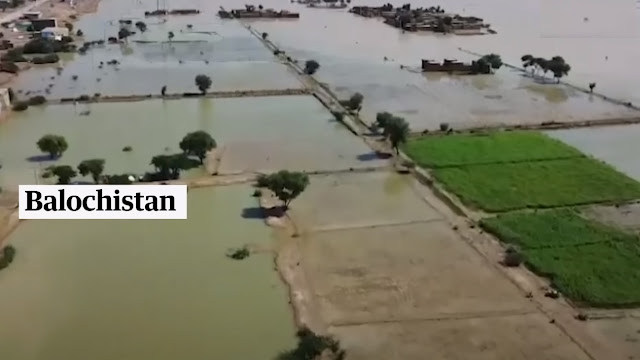Since mid-June, severe rains and flooding in Pakistan have killed about 1,033 people, including 348 children, and injured 1,527 more people, according to experts.
The National Disaster Management Authority (NDMA) of the nation noted that as of this moment, 119 people had passed away and 71 had been injured.
The disaster has touched around 33 million people, according to Pakistan's Minister for Climate Change Sherry Rehman on Thursday (25-08-2022). The floods were described as "extraordinary" and "the most truly awful accommodating calamity of a decade" by the speaker.
Rehman stated, "Pakistan is experiencing its eighth instance of a tempest although typically the country experiences between three to four occurrences of storm." "Super flood downpours are moving at varying speeds."
Pakistan's Prime Minister Sharif briefed international delegates on the problem on Friday, stating that his nation should concentrate its rebuilding toward more obvious natural change adaptability because it is at the forefront of ecological change despite having a relatively small carbon footprint.
Plan and promote development Ahsan Iqbal readily disclosed to Reuters that 30 million individuals have been impacted, which corresponds to about 15% of the overall population of the South Asian nation.
In a report released on Thursday, the UN organisation Office for the Coordination of Humanitarian Affairs (OCHA) stated that the torrential downpours had affected about 3 million people in Pakistan, of whom 184,000 had been relocated to relief camps in neighbouring countries.
It will be difficult for despondent Pakistan, which is slashing spending to ensure that the International Monetary Fund maintains the image of much needed bailout money, to support and multiply efforts.
In a study, the NDMA said that approximately 82,000 residences had suffered partial or complete damage, and 150 kilometres (about 93 miles) of highways had been damaged nationwide in the previous 24 hours.
According to the NDMA's most recent situation assessment, since the downpour started in mid-June, more than 3,000 kilometres (1,864 miles) of road, 130 structures, and 495,000 dwellings had been damaged. These numbers were supported by the OHCA report.
Request for assistance amid anxieties following the floods in Pakistan Rainstorm might submerge 33% of the country.
The super climate, which also affected China, Europe, and the US throughout the summer on the northern side of the equator, was becoming easier to predict as the changing environment produced more unpredictable events, he added.
According to Bradshaw, it was important for developed countries to take other actions to reduce their dependency on non-renewable energy sources. Typically, the nations that are least responsible for global warming—like Pakistan, for example—are the ones who bear the brunt of the financial burden of climatic catastrophes.
Bradshaw argued that industrialised nations needed to take additional steps to lessen their reliance on non-renewable energy sources. The majority of the financial cost of climatic calamities typically falls on the countries who have least to blame for global warming, such as Pakistan.





.jpeg)





0 Comments
if you have any doubts, please let me know.